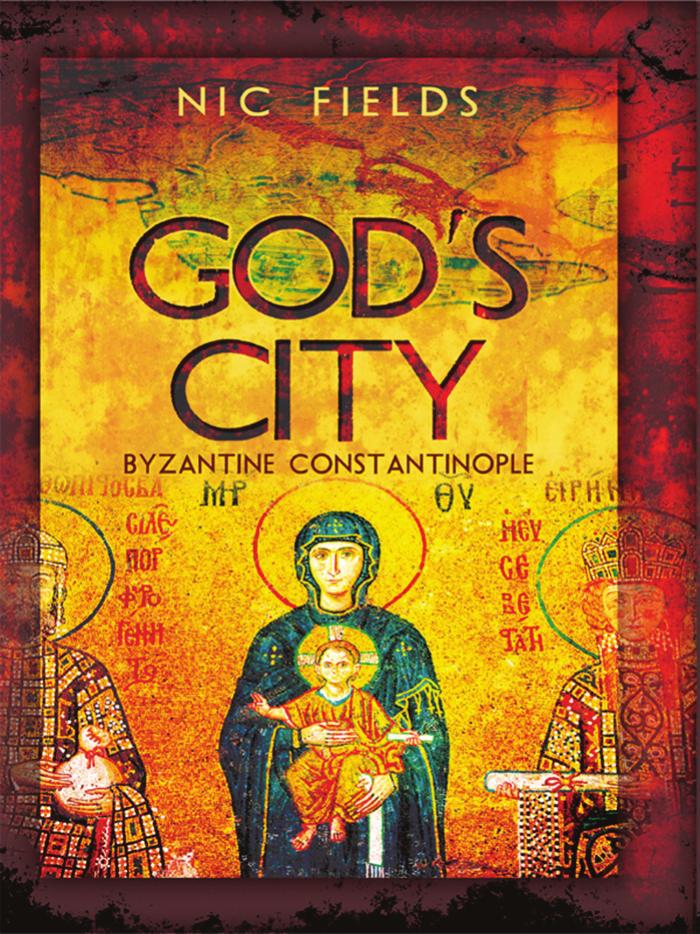God's City by Nic Fields

Author:Nic Fields [Fields, Nic]
Language: eng
Format: epub, pdf
Tags: Nonfiction, History, Military, Other, Ancient History
ISBN: 9781473895102
Publisher: Pen & Sword Books
Published: 2017-07-30T04:00:00+00:00
Centripetal versus centrifugal
The greater need for troops in the eleventh century had to be met by other than the customary means of relying upon soldier farmers. Thus we find, in the context of the rivalry between the civil and military aristocracy, the rise of the pronoia system, whereby the emperor would give personal grants of land to friends in return for the provision by the proniar (the receiver of the grant) of military aid in the form of men and supplies. The peasantry on the lands of the proniar were known by the term paroikoi, locals, a term which became synonymous with the word ptochoi, the poor. By the eleventh century, their position regarding the land they tilled was almost comparable to that of a serf, although they were not tied to it to the same extent as were western serfs. The central government attempted to limit the number of paroikoi on any single pronoia estate by excluding free peasants and soldier farmers from being included therein.
Land was to be held only for the lifetime of the proniar, but in time the system became abused with proniars using their influence to avoid their military and even their tax obligations. Consequently, much needed resources were squandered on the needs of private estates rather than on the state as a whole. Despite the fact that the emperor was still considered the owner of all land, effective ownership now lay in the hands of the landed magnates, dhynatoi (literally the âpowerfulâ), and thus some scholars see this development as an indication of Byzantine feudalism, although the hierarchy of rank and dependence affirmed by oaths of fealty common in the West were never really known in the Byzantine empire, thus differentiating eastern from western feudalism on a crucial point.
The two sources of patronage were the court and the army. Officials employed in and around the court are known as the civil aristocracy, the central government administrators in Constantinople. The generals and officers in the themes are known as the military aristocracy or landed magnates.
The first group consisted primarily of a hierarchy of merit that relied on oneâs proximity to the emperor or his ministers. Thus, the âbearer of the imperial inkpotâ was at times more important than a high minister. The civil aristocracy, based on a system of officers and ranks at the court, was there to maintain the power and prestige of the emperor, the central authority that kept it in office and pay. It should be noted that Byzantium did not have an aristocracy in the western sense of landed nobility. Many people working at court, for instance, including at times the emperor himself, could be of humble birth. Income more than land and blood defined oneâs importance, and income was derived almost exclusively from the state.
The second group were mostly made up of the landed military families whose members had over the centuries made up the officer corps of the thematic armies. These families, even by the tenth century, had become
Download
This site does not store any files on its server. We only index and link to content provided by other sites. Please contact the content providers to delete copyright contents if any and email us, we'll remove relevant links or contents immediately.
The Daily Stoic by Holiday Ryan & Hanselman Stephen(3268)
The Fate of Rome: Climate, Disease, and the End of an Empire (The Princeton History of the Ancient World) by Kyle Harper(3035)
People of the Earth: An Introduction to World Prehistory by Dr. Brian Fagan & Nadia Durrani(2711)
Ancient Worlds by Michael Scott(2653)
Babylon's Ark by Lawrence Anthony(2653)
The Daily Stoic by Ryan Holiday & Stephen Hanselman(2532)
Foreign Devils on the Silk Road: The Search for the Lost Treasures of Central Asia by Peter Hopkirk(2445)
India's Ancient Past by R.S. Sharma(2433)
MOSES THE EGYPTIAN by Jan Assmann(2395)
The Complete Dead Sea Scrolls in English (7th Edition) (Penguin Classics) by Geza Vermes(2259)
Lost Technologies of Ancient Egypt by Christopher Dunn(2208)
The Earth Chronicles Handbook by Zecharia Sitchin(2205)
24 Hours in Ancient Rome by Philip Matyszak(2066)
Alexander the Great by Philip Freeman(2045)
Aztec by Gary Jennings(1997)
The Nine Waves of Creation by Carl Johan Calleman(1898)
Curse Tablets and Binding Spells from the Ancient World by Gager John G.;(1853)
Before Atlantis by Frank Joseph(1832)
Earthmare: The Lost Book of Wars by Cergat(1807)
